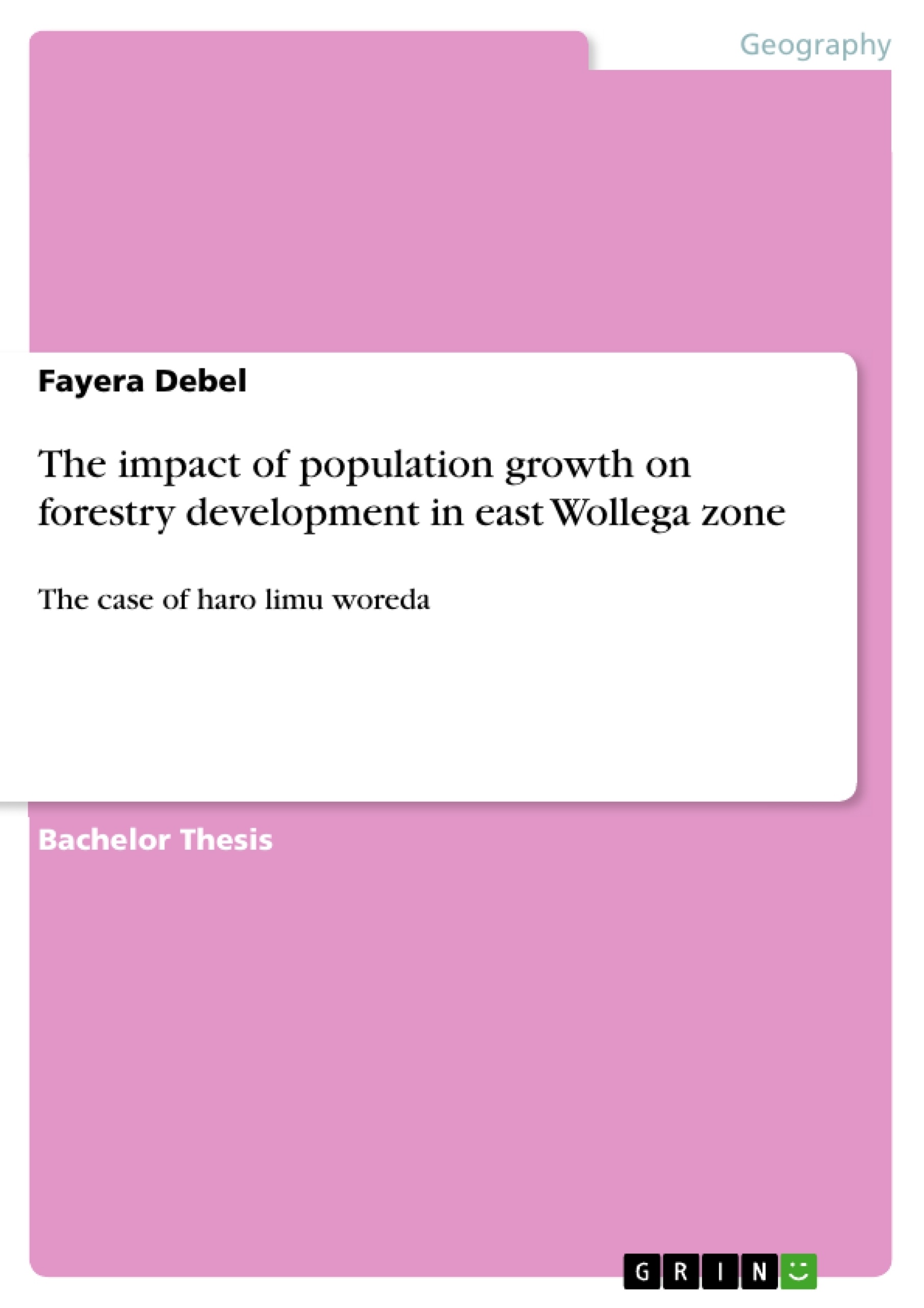Deforestation is a growing problem in many parts of the tropical world and one of the affected countries is Ethiopia. The general objective of this study is to assess the effect of population growth on forest resource in East Wollega Zone in general and Haro Limu woreda in particular. The data used for the study were collected from 89 farm households heads drawn from the four kebeles of Haro Limmu district. Probability proportional to size sampling technique was employed to select the farm households from four peasant associations, which were selected by random sampling techniques. Primary data were collected using a structured questionnaire. In addition, secondary data were extracted from relevant sources to supplement the data obtained from the survey.
The result of this study reveals that population growth huge impact on forestry development in the ways of expanding agricultural land, using wood as energy sources and satisfying the input requirements in agricultural activity. Respondents use family planning services in reducing the impact of population growth on the forestry development
Inhaltsverzeichnis (Table of Contents)
- CHAPTER ONE
- INTRODUCTION
- Background of the Study
- Statement of the Problem
- Objective of the Study
- General Objective
- Specific Objectives
- Hypothesis
- Significance of the Study
- Scope of the Study
- Limitations of the Study
- CHAPTER TWO
- REVIEW OF LITERATURE
- Theoretical Literature
- Meaning and Value of Forest
- Causes of Deforestation
- Connections between Population and the Environment
- Empirical Literature
- Trend in Population Size and Growth
- Pattern of Deforestation in Haro Limu
- Economic and Ecological Significance of Forest Resource
- CHAPTER THREE
- RESEARCH METHODOLOGY
- Description of the Study Area
- Demographic Characteristics of the Study Area
- Data Sources of data and Methods of Data Collection
- Type and Source of Data
- Methods of Data Collection
- Sampling Technique and Sample size
- Sampling Technique
- Sample Size
- Data Processing and Analysis
- CHAPTER FOUR
- RESULT AND DISCUSSION
- Impact of population growth on forest
- Causes and Consequences of Deforestation
- CHAPTER FIVE
- Summary, Conclusions and Recommendations
- Summary
- Conclusions
- Recommendations
Zielsetzung und Themenschwerpunkte (Objectives and Key Themes)
This study examines the impact of population growth on forestry development in the Haro Limu Woreda of East Wollega Zone, Ethiopia. The objective of the study is to investigate the causes and consequences of deforestation in the area. The following are the key themes of the study:- The relationship between population growth and deforestation
- The economic and ecological significance of forest resources
- The impact of deforestation on the environment and local communities
- Strategies for mitigating the impact of population growth on forest development
Zusammenfassung der Kapitel (Chapter Summaries)
- Chapter One: Introduction introduces the study's context, highlighting the relationship between population growth and deforestation in Ethiopia. The chapter defines the problem, objectives, and hypothesis of the study, emphasizing its significance and scope.
- Chapter Two: Review of Literature examines existing research on deforestation and its connection to population growth. This chapter explores theoretical frameworks on the value of forests, causes of deforestation, and the ecological and economic impacts of forest loss. It also presents empirical evidence on population growth trends, deforestation patterns, and the significance of forest resources in Haro Limu Woreda.
- Chapter Three: Research Methodology details the research design and methods used in the study. It describes the study area, demographic characteristics, and data collection techniques. The chapter outlines the sampling strategy, sample size, and data analysis methods employed.
- Chapter Four: Result and Discussion presents the findings of the study, analyzing the impact of population growth on forest development in Haro Limu Woreda. This chapter explores the causes and consequences of deforestation in the area, offering an in-depth discussion of the data collected.
Schlüsselwörter (Keywords)
The primary keywords and focus topics of this study include population growth, deforestation, forest development, environmental impact, economic impact, Haro Limu Woreda, East Wollega Zone, Ethiopia. These themes are explored through examining the relationship between population growth and forest resource use, the consequences of deforestation on both the environment and local communities, and strategies to mitigate the negative impact of population growth on forestry development.- Quote paper
- Fayera Debel (Author), 2014, The impact of population growth on forestry development in east Wollega zone, Munich, GRIN Verlag, https://www.hausarbeiten.de/document/278848


